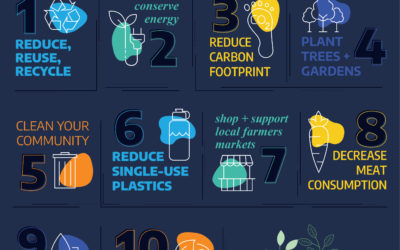Infrastructure Bill 2021: What It Means for Building Efficiency
Infrastructure Bill 2021: What It Means for Building Efficiency
The infrastructure bill recently signed into law lays out considerable funds in a variety of areas. So, what does it mean for building-efficiency projects specifically?

$1 Trillion for Infrastructure
The $1 trillion infrastructure bill that’s now signed into law lays out funding in many areas. Consequently, this includes roads, bridges, ports, rail transit, safe water, the power grid, broadband internet and more.
According to TechCrunch, outside of already allocated funding, the full bipartisan bill contains $550 billion in new spending. As such, this breaks down into $110 billion for roads and bridges, $66 billion for railroads, $65 billion for the power grid, $65 billion for broadband, $55 billion for water infrastructure, $47 billion for cybersecurity and climate change, $39 billion for public transit, $25 billion for airports, $21 billion for the environment, $17 billion for ports and $11 billion for safety.

$5 Billion for Energy Efficiency in Buildings
Out of the $1 trillion total, about $5 billion goes to a wide range of programs geared to reduce electricity use in buildings, improve the materials used to build them and train more people to design, build and maintain energy-efficient buildings. Subsequently, here are the funding items most relevant to building efficiency in the infrastructure bill as outlined by Fast Company:
- Weatherization Assistance Program: A preexisting program that will receive $3.5 billion for dwellings owned or occupied by people with low incomes. It provides funding to upgrade residences with better insulation, windows, roofing and heating and cooling devices.
- Energy Efficiency and Conservation Block Grant Program: Another preexisting program that’s a funding tool used by local governments to issue grants for energy retrofits. The infrastructure bill dedicates $550 million to the program for the next fiscal year. The bill also sets aside $500 million for energy-efficiency and renewable-energy improvements at public schools. For example, that can include everything from replacing outdated HVAC systems to installing infrastructure to charge electric vehicles.
- Building codes: A $225 million grant program will help local governments upgrade their building codes. As a result, the new grant program aims to help get codes updated to the most recent energy-efficiency standards.
- Education: A $10 million program will provide funding to higher-education institutions to establish centers where students can learn how to assess and maintain energy efficiency in buildings.
- Energy-efficient nonprofit buildings: A $50 million program will support the use of energy-efficient construction materials in buildings used by nonprofits. Hence, this will help improve the resiliency of low-income organizations while also spurring research into low-carbon building materials.

What Else for Building Efficiency?
In addition, a couple other funding items support building efficiency as outlined by the AP:
- The electric grid: To protect against the power outages that have become more frequent in recent years, the bill will spend $65 billion to improve the reliability and resiliency of the power grid. A more efficient grid will further support building electrification.
- Water and wastewater: $55 billion would be spent on water and wastewater infrastructure. Thus, this will help projects that use wastewater for energy recovery.

Contact Us to Learn More
For more information on how the infrastructure bill impacts buildings in New York City specifically, contact us via the below form:
Contact Us for More Information
Our technologies are customized for each job. Contact us for specifications and more information.
Insights
Earth Day 2024
Earth Day— the HIGHMARK Way It’s April 22, a day...
World Water Day 2023: Accelerating Change via Building Efficiency
World Water Day 2023: Accelerating Change via...
LL97 Proposed Rules & the Building-Efficiency Technologies To Achieve Them
LL97 Proposed Rules & the...
Energy Awareness Month & Energy Efficiency Day 2022: Bolster Sustainability via Building Efficiency
Energy Awareness Month & Energy Efficiency...
World Environment Day 2022: “Only One Earth” Safeguarded via Building Efficiency
World Environment Day 2022: “Only One Earth”...
Earth Day 2022: Invest in Our Planet With Building-Efficiency Technologies
Earth Day 2022: Invest in Our Planet With...
Let’s Work Together
Technologies
Resources
About Us
© 2023 HIGHMARK | Building Efficiency






